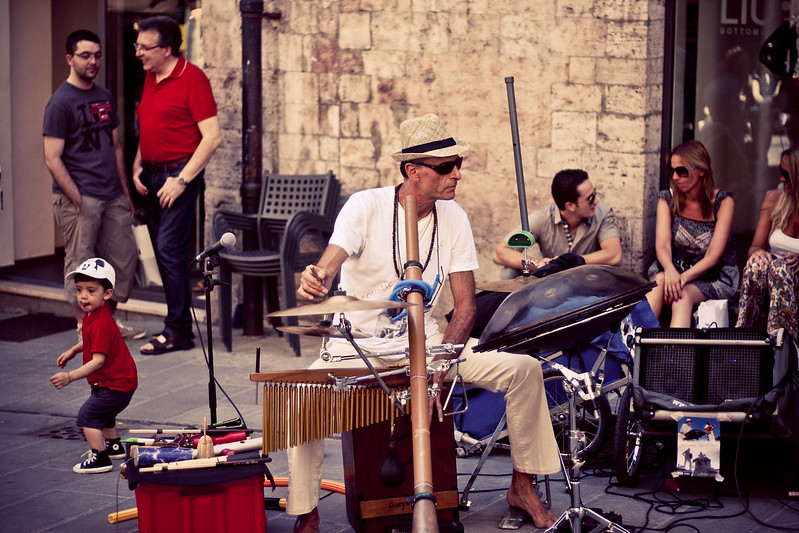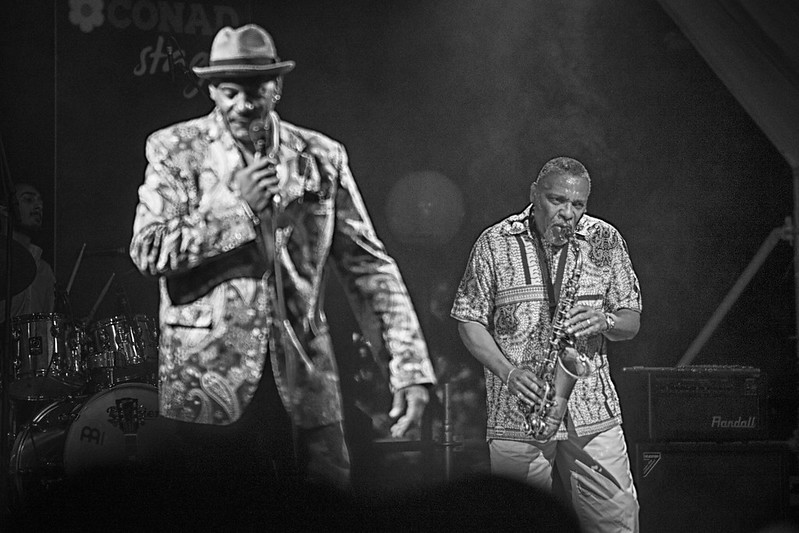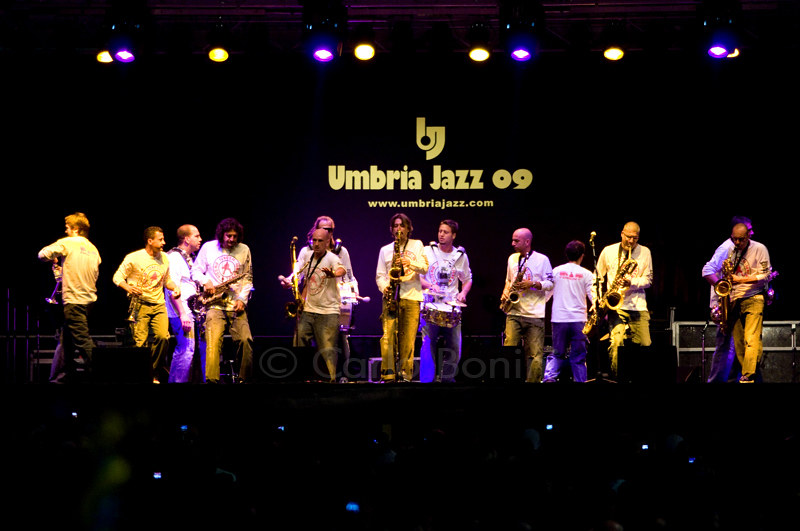Umbria Jazz Festival
Where Medieval Charm Meets Modern Rhythms
2026/07/09 - 2026/07/18
Every July, the ancient city of Perugia in central Italy's Umbria region transforms into an innovative hub of music for the Umbria Jazz Festival. For 10 days, from July 11 to 20, 2025, the cobblestone streets and historic squares will be filled with world-class jazz, attracting over 200,000 music enthusiasts from around the globe. This festival is not just for jazz fans; it's a celebration of music, culture, and the "dolce vita" (sweet life) that defines Italian summers.
Main Attractions
Concerts at Santa Giuliana Arena
The heart of the festival is the nightly concerts at Santa Giuliana Arena, featuring international jazz legends and contemporary stars. As the sun sets over Perugia's medieval skyline, the open-air arena comes alive with the smooth tones of saxophones and the rhythmic pulse of double basses. The music floats on the warm Umbrian breeze, mingling with the scent of nearby olive groves.
Street Performances
During the day, Perugia's historic center becomes a stage for impromptu jazz sessions. Wander through the narrow alleys and you might stumble upon a quartet playing in a centuries-old courtyard, their melodies echoing off weathered stone walls. In Piazza IV Novembre, with its magnificent Fontana Maggiore, daily free concerts are held where locals and tourists gather, tapping their feet on the sun-warmed cobblestones.
Culinary Jazz
The festival is as much a feast for the palate as it is for the ears. Local restaurants and street vendors offer Umbrian specialties with a jazzy twist. Savor truffle-infused pasta while listening to a blues guitarist, or enjoy a glass of crisp Orvieto Classico wine accompanied by the sultry tones of a jazz vocalist. The aroma of porchetta, a local roast pork delicacy, wafts through the air, creating a sensory harmony with the music.
Cultural and Historical Background
The Umbria Jazz Festival was founded in 1973 by Carlo Pagnotta. In the early 1950s, Pagnotta and his friends would discuss jazz at a record store in Perugia, where he developed the idea of promoting Umbrian culture and tourism through an international jazz event. This vision came to fruition with free concerts held across various locations in Umbria.
Initially a small regional event, the festival quickly grew and was even dubbed the "Italian Woodstock." After a brief hiatus in 1978, it resumed in 1982 with a new format combining paid and free concerts. By 1990, it had evolved to join the European Jazz Festival Organization (later the International Jazz Festival Organization).
The festival's success lies in carefully balancing artistic quality with commercial elements, all set against the backdrop of Umbria's historical beauty. It offers three distinct experiences: performances on the main stage, concerts in theaters, clubs, and the National Gallery of Umbria, and free outdoor stages. This approach covers a wide range of music genres, from pure jazz to broader styles, attracting diverse audiences.
For the people of Umbria, this festival is more than just a music event. It's a symbol of their cultural identity and embodies the harmony between tradition and innovation. Performances by legendary artists like Charles Mingus, Miles Davis, Sonny Rollins, and Sting have become part of the festival's history and a source of pride for locals.
The festival also focuses on nurturing young musicians. Since 1986, the "Berklee at Umbria Jazz Clinics" program has trained over 5,000 young musicians. In this way, Umbria Jazz provides a platform for cross-generational cultural exchange and education, significantly contributing to the region's cultural development.
Participant Voices
Drawn by the sound of a saxophone echoing through a medieval alley, I followed the music to a small square where a band was playing. The contrast of modern jazz against the backdrop of centuries-old architecture was mesmerizing. A young Italian man noticed my enthusiasm and started chatting with me. He shared stories of past performances and how the event had transformed Perugia. By the end of the evening, I felt like I'd been given a personal tour of both the festival and Italian jazz history. The Umbria Jazz Festival isn't just an event; it's a gateway to understanding Italian culture and hospitality.
Fun Facts
- Since its inception in 1973, the Umbria Jazz Festival has featured over 500,000 minutes of live music.
- In 2002, the festival set a Guinness World Record for the longest non-stop jazz concert, lasting 24 hours.
- The festival has a unique "Jazz Lunch" program where attendees can enjoy performances while dining in historic palazzos.
- Umbria Jazz was one of the first festivals to combine jazz with local wine tastings, creating the popular "Jazz & Wine" events.
- The festival's educational program, "Berklee at Umbria Jazz Clinics," has nurtured over 5,000 young musicians since its start in 1986.
Festival Dates
The Umbria Jazz Festival is held annually in July.
The event schedule is subject to change. Please check the official website for the most up-to-date information.
Information
| Name | Umbria Jazz Festival |
| Country | Italy |
| Area | Perugia |
| Date | 2026/07/09 - 2026/07/18 |
| Link |
Upcoming Festivals
Whirling Dervishes Festival Turkey
A Mesmerizing Dance of Divine Love
2025/12/06Mevlana Celaleddin Rumi Commemoration Ceremony ( Şeb-i Arus ) Turkey
A Whirling Journey to Divine Love
2025/12/10Dia de la Virgen de Guadalupe Mexico
A Festival Weaving Faith, Fervor, and Mexican Identity
2025/12/11L'Escalade Switzerland
Geneva’s Grand Winter Festival of Courage, Chocolate, and Community
2025/12/12Umkhosi Wokweshwama South Africa
The Zulu First Fruits Festival—A Sacred Celebration of Land, Ancestors, and Renewal
2025/12/12Lucia Festival (St. Lucia's Day) Sweden
A Festival of Light Illuminating the Nordic Darkness
2025/12/15Las Posadas Mexico
The Luminous Quest for Sacred Shelter
2025/12/22Noche de Rabanos (Night of the Radishes) Mexico
A celebration blending art, farming heritage, and cultural traditions
2025/12/23Chant of the Sybil on Majorca Spain
A Medieval Prophecy Echoes Through Majorcan Christmas
2025/12/23‘Hatajo de Negritos’ and the ‘Hatajo de Pallitas’ Peru
A Christmas Festival of Rhythm, Faith, and Afro-Andean Heritage in Peru’s Ica Region


